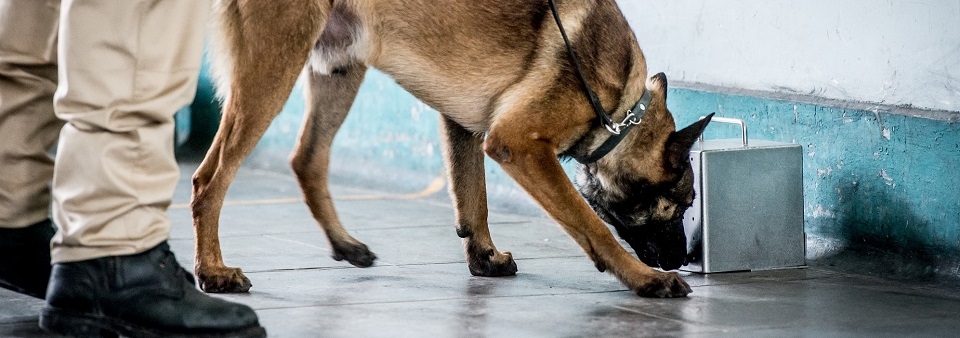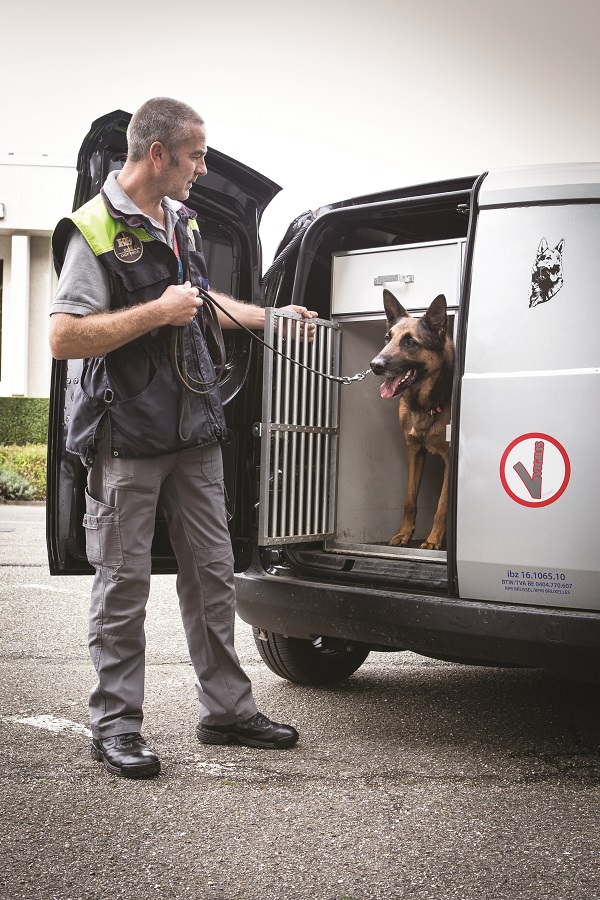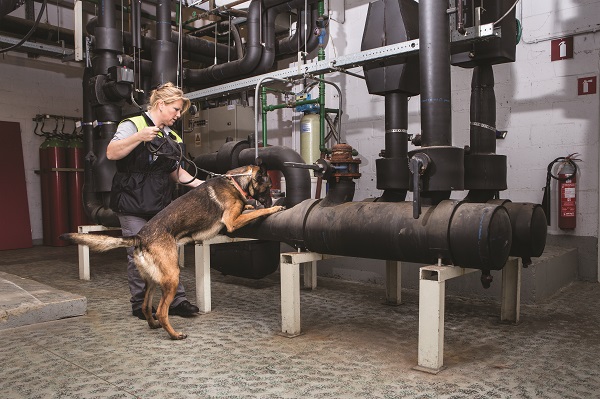
 The job of security guard is multi-functional. It’s a combination of discipline, professional knowledge, flexibility, helpfulness and reliable cooperation with colleagues. Today we want to shed light on our most “loyal” colleagues, our dogs.
The job of security guard is multi-functional. It’s a combination of discipline, professional knowledge, flexibility, helpfulness and reliable cooperation with colleagues. Today we want to shed light on our most “loyal” colleagues, our dogs.
For Marc Mertens, Chief Inspector and Chief K9 Team, it’s clear: only passion for dogs can result in perfect collaboration.
Marc Mertens has specialised professionally in surveillance through the combination of man and dog since 1997. Today, SERIS has an important department where dogs play a crucial and indispensable role in a surveillance assignment; just think of assignments within “critical infrastructure” such as, for instance, SHAPE and NATO.
“A dog never lies. Its incredibly sharp sense, the instinct of notifying abnormal situations and an important eagerness to learn make it one of our most loyal colleagues”, says Marc Mertens.
But just like a security guard, a dog must also complete a whole training trajectory. This is almost a lifelong task. Socialisation and driven habituation starts between the ages of eight to ten weeks”. The objective is that the dog responds neutrally to man and animal. This is followed by technical specialised training after around six weeks. Training is of course different for patrol dogs than for dogs tracking explosives. What’s new is that, in the new legislation, dogs are also allowed to be used to track drugs. The dog is then operational from twelve to fifteen months.
Passion is the key!
“This lifelong training requires passion for working with an animal”, continues Mertens. “In a way, an attendant is always focusing on his partner. It’s a way of living. Either the dog is working, or he is resting or training. Due to this challenge, it’s not the hours you spend together that count, but the presence of a constant urge to increasingly improve the professional result of cooperation”.
This is why it’s so important to carefully prepare the end of the dog’s career. It’s essential that the tasks of the dog are systematically reduced at the end and taken over by the next dog. On the one hand this is important for continuity of the surveillance tasks. On the other hand, this is important to prevent the dog from suddenly ending up in a “void”, where he or she has nothing to do after so many years of performing and starts to feel sorrowful, with all possible due consequences. This is because the dog’s natural character is the will to please, and this doesn’t stop at retirement age.
It’s generally known that dogs create a sense of increased perception of safety in surveillance. The image of the dog often has a dissuading effect on people with mala fide intentions.
“Still it must be the intention that the dog doesn’t become an unconditional deterrent. The task must be carried out correctly and adequately, but the dog should not evoke fear. And this is the attendant’s main task!” concludes Marc Mertens.
